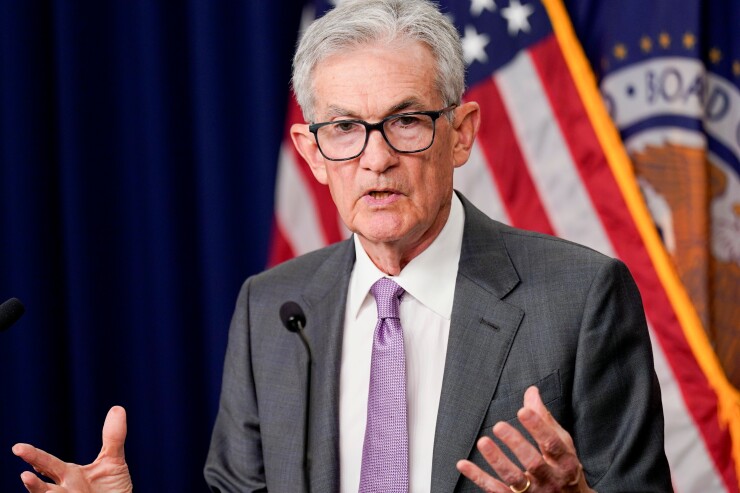Al Drago/Photographer: Al Drago/Bloomberg
Inflation and unemployment are the two key data points the Federal Reserve leans on when
Powell said government measures of gross domestic income, or GDI, had been coming in low relative to gross domestic product, or GDP, resulting in a low savings rate — an outcome often associated with economic weakness. But, recent revisions to GDI boosted the savings rate from 4.8% to 5.2% and, according to Powell, assuaged some concerns at the Fed.
“There’s now no gap between [GDI and GDP],” Powell said. “In theory, there should be no gap. There’s no statistical error in measurement. So that .. removes a downside risk to the economy.”
Powell added that the higher income projections erased another simmering concern for the Federal Open Market Committee: that consumers were spending more than they were earning.
“There are more savings on people’s balance sheets, and the savings rate is higher,” he said. “That suggests that spending can continue at a healthy level.”
Powell’s comments on inflation data came during an on-stage question and answer session at the National Association for Business Economics, or NABE, annual conference in Nashville. The discussion largely focused on labor market conditions and Powell’s economic outlook. He discussed notable developments since the last FOMC meeting that could factor into the group’s next policy move.
Powell noted that the most relevant data readings — the consumer price index, the personal consumption expenditure index and the Board of Labor Statistics’s labor situation report — are still to come.
Earlier this month, the FOMC lowered its benchmark interest rate by half a percentage point. It was the first policy rate cut by the Fed since 2020 and marked the end of the central bank’s 30-month battle to rein in inflation.
In prepared remarks, Powell said the decision was made in light of the continued improvement in market prices and a softening of labor market conditions — but he noted that the cut should not be interpreted as a sign of economic weakness.
“That decision reflects our growing confidence that, with an appropriate recalibration of our policy stance, strength in the labor market can be maintained in an environment of moderate economic growth and inflation moving sustainably down to our objective,” he said.
Powell added that the baseline expectation is for the FOMC to continue lower interest rates at the two remaining meetings this year, but said that course of action is not set in stone.
“Looking forward, if the economy evolves broadly as expected, policy will move over time toward a more neutral stance. But we are not on any preset course,” he said. “The risks are two-sided, and we will continue to make our decisions meeting-by-meeting. As we consider additional policy adjustments, we will carefully assess incoming data, the evolving outlook, and the balance of risks.”
